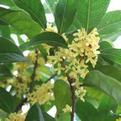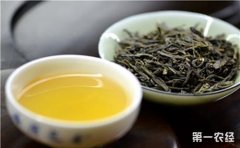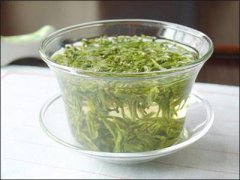Food safety topic: which flowers can be eaten in detail, and the food safety of floral agricultural products
Do you know any flowers to eat? Do you want to know about it? Let's take a look. You may love the taste of some flowers after eating them.
Whenever flowers are in full bloom, they are always crowded with people watching them compete for beauty. Have you ever thought that "flowers" can also be eaten? Flower and plant agricultural products can use their roots, stems, leaves, flowers or fruits to make cooking, drinks, food additives or health food. with the progress of agricultural product processing technology, more and more edible flowers and plants have been developed.

At present, the edible agricultural products cultivated in China mainly include honeysuckle, Houttuynia cordata and Egyptian wild hemp baby in Keelung City; sweet-scented osmanthus in New Taipei City; lotus flower in Taoyuan County; Immortal grass in Hsinchu County; Hangzhou Chrysanthemum and Perilla in Miaoli County; Rose and Clematis in Nantou County; Rose and Lotus in Tainan City; Hangzhou Chrysanthemum, Luoshenhua and Golden Needle in Taitung County; Lotus, Immortal Grass and Clematis in Hualien County Wind grass in Penghu County (medicinal plants, known as Penghu Herb juice), and so on.
In the early stage, due to imperfect laws and regulations, the difference between edible and ornamental flower and plant agricultural products was not clear, and the management measures were not easy to implement, resulting in the problem of excessive pesticide residues in imported or domestic edible flower and plant agricultural products. In view of the increasing and derivative problem of pesticide residues, the Department of Health included all kinds of edible flowers and plants in the "Safety tolerance Standard for Pesticide residues" in 1990, in order to strengthen the management basis of pesticide residues in edible flowers and plants. According to current standards, floral crops include spice plants and other herbs, such as rose, chrysanthemum, lotus, chamomile, lavender, mint, lemongrass, rosemary, pepper, star anise, cumin (fruit), gynostemma pentaphyllum, yellow essence, Amomum, cardamom, nutmeg and so on.
The Agricultural Inspection Center of the Association inspected 38 pieces of edible flower and plant agricultural products in 1990. there were 9 kinds of samples, including stevia, golden chrysanthemum, Hangzhou white chrysanthemum, Hangzhou chrysanthemum, yellow chrysanthemum, rose, Luoshen flower, wild ginger flower and lotus flower. Among the test results, 20 cases were completely free of pesticide residues, and 1 case detected pesticide residues, but did not exceed the safety tolerance. 17 samples were unqualified, all of which were dried chrysanthemum tea samples. A total of 18 kinds of pesticides were detected, including amoxone, befentin, Yidaamide, Doson, Damiphen, tetrachloroisobenzonitrile, Bailiprifen, ampicin, Gaboli, thiodicarb, triclosan, BIFNINE, SIMING, Diclosan, prednisone, Dexon, Zhimen, fluron and other pesticides. The most commonly detected pesticides are methamphetamine (insecticide) and befentin (fungicide). In addition, according to the newspaper, the Taipei City Health Bureau tested dried chrysanthemums in 100 and found that 90% of dried chrysanthemums had unqualified pesticide residues, and the failure rate of herbal tea products sold in the market by the Consumer Protection Institute of the Executive Yuan was as high as 90%. The above inspection data show that: at this stage, the safety quality of dried chrysanthemum agricultural products is worthy of attention and guidance from relevant units, and it is suggested that consumers should choose products with brand certification when eating dried flowers and plants as tea drinks. The tea soup in the first bubble should not be drunk as much as possible, and it is safer.
In order to improve the health and safety quality of domestic Hangzhou chrysanthemum, Hangzhou chrysanthemum has been included in the products promoted by the Jiyuan garden logo since 1990, actively tutoring farmers in training courses such as safe use of drugs, cultivation management, and processing of agricultural products. Relevant agricultural administration and health units also actively strengthen the inspection of products sold in the place of origin and on the market. It is expected that government units can guide farmers or agricultural products processors to establish safety and quality certification of floral agricultural products, ensure the food safety of the products themselves through internal independent management and external inspection, and indirectly enhance the image and value of the products.
Now that you know which flowers you can eat, do you want to eat them? I will try it out to see if it is delicious.
- Prev

The nutritional value of tea: the use value of tea has been wasted, and the health-preserving tea cyanine drink has been promoted.
The tea has been soaked with nutritious value and wasted? Tea to promote health tea Jing drink, this is not better, you can have a good look. The Tea Industry improvement Farm of the Agricultural Committee of the Executive Yuan innovated and developed the "Tea Sing Powder processing Technology", which retained the most primitive and complete tea.
- Next

New findings of Green Tea and Anti-Cancer: is Green Tea Anti-Cancer really? Is the authenticity of green tea cancer prevention high?
Do you know the new discovery of anti-cancer mechanism of green tea? Have you had any tea? Do you know whether green tea can fight cancer in the end? Let's get to know it. Professor Thomas A. Gasiewicz of Rochester University Medical Center and others have found that green tea can influence
Related
- A one-day flower show brings 130 million yuan in orders! Nanhai, this Phalaenopsis exhibition is amazing
- What do the flower language and meaning of Lutheran tree mean? Precautions for planting Lutheran tree
- Encounter Chaoshan Kongfu tea, not without this cup of Phoenix single clump
- The durian market in Vietnam and Thailand is flooded. The price of imported durian has plummeted by 30-40% in a month.
- Shanghai solved the problem of local vegetable supply by planting 80,000 mu of green leafy vegetables.
- Wageningen University has become the best agricultural university in the world for the seventh time in a row.
- The strongest export season of South African grapes is full of challenges, with exports to Russia falling sharply by 21%.
- Sri Lanka is on the verge of bankruptcy, "Tea for debt" Organic Agriculture Revolution aggravates the Food crisis?
- Turning waste into earthworm manure and worm manure into organic fertilizer-A new choice for auxiliary farming
- Organic rice growers shoulder the responsibility of nurturing agricultural talents! Yinchuan Sustainable Farm with Organic Life Camp

